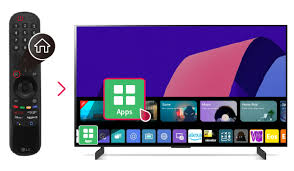The rapid growth of Smart TVs has transformed how people consume media. With millions of Smart TVs in homes worldwide, businesses have a unique opportunity to reach a broader audience. However, developing an app for Smart TVs has often been seen as a challenging and technical task. If you lack coding knowledge, fear not.
There are now ways to create Smart TV apps without writing a single line of code. This article covers the steps and tools required to build an app for Smart TVs without any coding experience.
1. Why Smart TV App Development Matters
Smart TVs have become integral to the daily lives of many consumers. With the ability to stream content, access various apps, and interact with other smart devices, Smart TVs serve as a central hub for entertainment, gaming, and browsing. Because of this, creating an app for these platforms opens up new avenues for businesses, developers, and content creators to engage with their audience. Whether you are a media company, a game developer, or a business looking to create a branded app, Smart TVs offer a massive market. A smart TV app development company can help businesses capitalize on this by creating customized apps that cater to the needs of their target audience.
2. Platforms for Smart TV App Development
Before developing an app for a Smart TV, it’s important to understand the platforms on which your app will run. Different Smart TV brands use different operating systems, each with its own app development requirements. These include:
- Tizen OS (Samsung): This platform is exclusive to Samsung Smart TVs and is one of the most popular systems globally.
- webOS (LG): LG Smart TVs use this operating system, which also has its own set of development tools and requirements.
- Android TV: Based on Google’s Android platform, this system is used by various brands, such as Sony, Nvidia Shield, and Xiaomi.
- Roku TV: Roku is another major player, and its platform is known for its simplicity and user-friendly interface.
- Apple TV: Apple’s platform provides a rich ecosystem for apps but requires familiarity with iOS app development.
Different tools are available depending on the platform you choose. If you don’t have coding experience, it’s essential to select a method or tool that simplifies the development process. This way, you can still create apps that work across a variety of devices and platforms.
3. Tools for Building Smart TV Apps Without Coding
Several platforms allow you to create Smart TV apps without writing code. These tools are ideal for those who want to create apps but lack technical skills. Some of the best options include:
a. Appy Pie
Appy Pie is a no-code app development platform that enables users to build apps for different platforms, including Smart TVs. The platform offers an intuitive drag-and-drop interface where you can design your app without needing to understand complex coding. Appy Pie also provides various templates for Smart TV app development, ensuring that the app looks professional and functions as expected.
Features:
- Drag-and-drop interface.
- Ready-to-use templates for TV apps.
- Integration with streaming platforms.
- Analytics and user engagement tools.
b. Thunkable
Thunkable is another no-code platform that allows users to create apps for Android TV and Apple TV. With Thunkable, users can design their app’s interface, add features, and test the app all within the same platform. It also allows you to preview the app live on a real device, ensuring you see how it will work in practice.
Features:
- No-code app development for Android TV and Apple TV.
- Live app preview.
- Cross-platform support for Android and iOS.
- Drag-and-drop builder.
c. Adalo
Adalo is a platform that makes building mobile and Smart TV apps accessible without coding. With its simple drag-and-drop functionality, Adalo helps you design the layout, add features, and test your app on multiple devices. While it’s mostly used for mobile app development, Adalo can be configured to create apps for TV platforms as well.
Features:
- Easy-to-use drag-and-drop interface.
- Cross-platform development support.
- Simple setup for connecting to databases and APIs.
- User authentication and management.
d. Bubble
Bubble is a popular no-code platform that enables users to build web applications. While it’s typically used for web apps, Bubble can also be configured to develop apps for Smart TV platforms by exporting them as progressive web apps (PWAs). PWAs can be accessed directly from the browser on Smart TVs, providing a cost-effective solution for Smart TV app development.
Features:
- Build apps with a visual interface.
- Connect to APIs and external services.
- Create web-based apps that work on Smart TVs.
- No coding required for app development.
e. GoodBarber
GoodBarber is another no-code app builder that allows you to design apps for a variety of platforms, including Smart TVs. It provides an intuitive interface for app creation, offering templates and customization options for those who want to develop apps for both mobile devices and Smart TVs.
Features:
- Ready-made templates for Smart TV apps.
- Full control over app design and features.
- Integration with content management systems.
- Simple publishing process.
4. Key Features to Include in Your Smart TV App
When developing a Smart TV app without coding, it’s crucial to think about the key features that your app should have. Whether you’re creating a streaming app, a gaming platform, or a utility app, the functionality of your app will play a significant role in its success. Here are some features that could make your Smart TV app more engaging:
- User Interface (UI): A simple, easy-to-navigate UI is essential for Smart TV apps. Most Smart TVs use remote controls, so it’s important to design an interface that’s optimized for navigation with a few buttons.
- Media Streaming: If your app involves video or audio content, include features for media streaming. For example, you can incorporate video players, playlists, or live streaming options.
- Integration with External Devices: Many Smart TVs are compatible with voice assistants like Alexa, Google Assistant, or Siri. Including integration with these platforms can enhance the usability of your app.
- Push Notifications: These can be used to engage users with new content, updates, or reminders.
- Multi-Language Support: As Smart TVs are used in diverse regions, offering multi-language options can help attract a wider audience.
5. Testing Your Smart TV App
After creating your Smart TV app, it’s time to test it to ensure everything works as expected. Testing is vital for identifying bugs or glitches before you launch the app to the public.
a. Device Testing
The best way to test your Smart TV app is by using a physical device. Connect your TV to a developer account on the relevant platform (such as Tizen, webOS, or Android TV) and sideload your app for real-world testing. This method allows you to see how your app works on the actual hardware.
b. Simulators
For those who don’t have access to physical devices, most platforms offer simulators that mimic the Smart TV environment. These simulators allow you to test your app’s functionality and user interface without having to deploy it on a physical TV.
c. Beta Testing
Before officially launching your app, conduct beta testing by inviting a small group of users to provide feedback. They can help identify issues you might have missed during testing and provide suggestions for improvement.
6. Publishing Your Smart TV App
Once you’ve tested and refined your app, it’s time to publish it. Each platform has its own publishing requirements, and you’ll need to follow these to ensure your app gets listed in the respective app store.
- Tizen OS (Samsung): To publish an app on Samsung Smart TVs, you’ll need to create a developer account on Samsung’s Developer Program, submit your app, and go through their review process.
- webOS (LG): The process is similar for LG Smart TVs. You’ll need to register as a developer and submit your app through LG’s Developer Console.
- Android TV: To publish your app on the Google Play Store for Android TV, you’ll need to create a developer account with Google and follow their submission guidelines.
- Roku TV: Roku has its own developer portal where you can submit your app for review and approval. The process is streamlined, and Roku provides plenty of documentation to guide you.
- Apple TV: Publishing on Apple TV requires enrollment in the Apple Developer Program, followed by submitting your app through Xcode.
7. Conclusion
Creating a Smart TV app without coding is not only possible but also incredibly accessible. Platforms like Appy Pie, Thunkable, and GoodBarber have simplified the process, allowing anyone to build apps that run on various Smart TV platforms.
By following a few simple steps, such as choosing the right tool, considering essential features, and testing thoroughly, you can develop a functional and engaging app for Smart TVs. The increasing use of Smart TVs provides a tremendous opportunity for developers and businesses to reach new audiences, and the tools available today make it easier than ever to get started in Smart TV app development.





